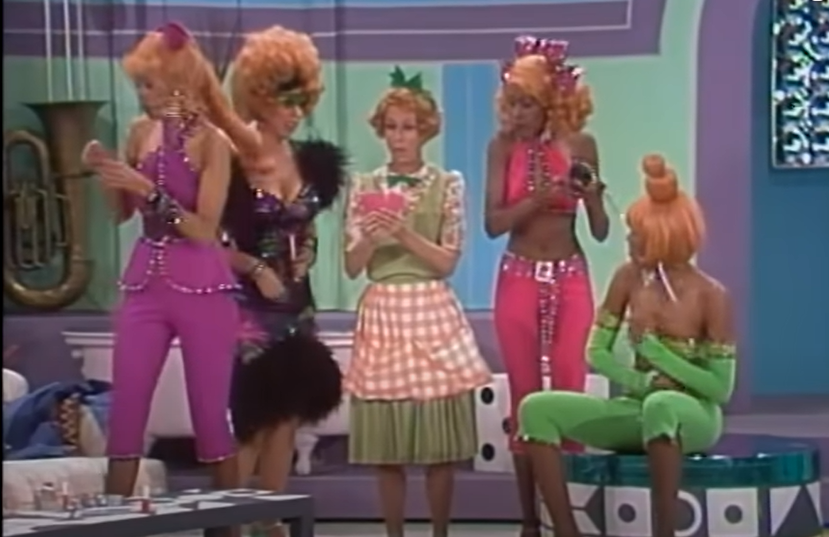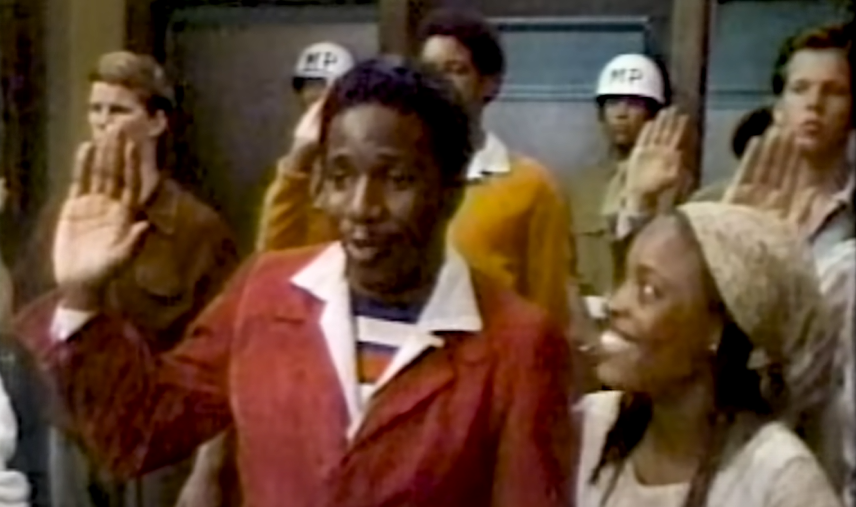In a previous post, we went over how Cinderella was modernized in the first few decades of the twentieth century in pre-television cinematic featurettes. The 1950’s brought a television boom. By 1953, half of all American homes owned a TV set. Sadly, the small screen Cindys of fifties haven’t survived in a form that’s currently accessible. Televised Cinderellas of the 1950’s include a 1957 broadcast of the Rodgers and Hammerstein adaptation and a Cinderella ballet, neither of them realistic or modernized. An episode of Goodyear Television Playhouse entitled “Backwoods Cinderella” and a Studio 57 episode called “Mr. Cinderella” may be modernized, but these are not currently available for viewing online. While some beloved early television like I Love Lucy is kept accessible by nostalgia and continual demand, television programs of middling popularity isn’t usually preserved. The previously discussed featurettes are short enough to find a happy home on YouTube or Dailymotion, but longer media is better suited to streaming services, which tend to favor more current media. Sometimes finding surviving copies of television reels for this early decade is a challenge, too. Fortunately, sixties and seventies Cinderellas are still around for your viewing pleasure on YouTube and streaming platforms.
While the villain of Cinderella is usually a stepmother, a 1961 episode of The Andy Griffith Show (currently available on Amazon Prime) gender swaps her and gives Cinderella a cranky farmer father. The cast already features a recurring character named Ellie, whose name seems to make her a natural fit for the Cinderella role, but she instead functions as the godmother. Frances “Frankie” Flint’s controlling dad won’t let her wear the simple luxuries of modern womanhood-lipstick, rouge, and perfume called Midnight Madness in reference to Cinderella’s curfew. When pharmacist Ellie Walker notices Frankie longing for these things, she recruits the local sheriff and deputy to bring Frankie into town for a makeover. Deputy Barney Fife is initially reluctant, fearful he’d be ridiculed for delivering makeup, while Sheriff Andy is unwilling to undermine Farmer Flint’s patriarchal authority over his daughter. This prompts Ellie to respond, “This is the twentieth century. He may be her father but he’s not her master.”

The episode’s title? Ellie Saves a Female. Admittedly, Frankie is not outright abused as many other Cinderellas are, so Ellie doesn’t “save” her from the usual life of misery. But the title emphasizes the Cinderella tale’s core plot point of women aiding women.

In 1975, Carol Burnett’s Cinderella wants to be a hip chick, like her stepsisters, who have boogied off to the disco to dance with the king of Rock n Roll, Elton John. The seventies vibe is captured in all its ghastly, neon-hued, sequin-tastic glory. But despite her magical makeover, Cinderella is still a square. Elton is reluctant to take her once he sees her sans-sparkles, but her godmother remedies the situation by transforming the king of music into a door-to-door salesman. Cinderella responds to this make-under by telling him, lovingly, “Oh Elton, you’re a square.” This is a reversal of the typical Cinderella arc, in which her change in glamour and apparent status are what secure her future. Here, the man must change to meet his princess where she’s at.

Three years later, in the 1978 TV movie Cindy, available on YouTube, Cinderella once again revisits World War II. This time, she’s a wide-eyed country girl from South Carolina who moves up to Harlem to live with her father. The poverty of the all-black cast is frequently played for comedy. Apartments don’t have cellars, so her stepmother, who her father only married so they could combine paychecks and afford rent, forces Cindy to sleep in the bathroom. Her love interest, draft dodger Michael, lives on a fire escape because his chauffeur salary can’t afford the actual apartment the fire escape is attached to. Though she likes Michael, Cindy is a patriot at heart and can’t bring herself to love a man who shirks his duty. Though not set in the seventies itself, this TV film provides a modernized take on issues like war and poverty. Though racism is never discussed outright, it’s alluded to. Cindy’s father works as a washroom attendant for the wealthy white patrons of the Plaza Hotel. Though he promises he’ll “make enough money to get you the best dress there is,” he still isn’t able to garner enough tip money to send Cindy to the party. Michael “borrows” a party dress from his boss’s wife and chauffeurs her to the ball, where she catches the eye of Captain Joe Prince, a hubristic war hero hailing from Harlem. In this way, Michael functions as the fairy godmother. The movie ends with Cindy joining Michael as he takes the oath of service-not because he’s undergone a patriotic change of heart, but because the dress theft got him fired and he needs money. Rather than marry the prince of Harlem, she, Michael, and their newborn baby live happily ever after-on the fire escape.
Though she retains her roots as a timeless storybook character, Cinderella is constantly updated to match the music, dance, style, technology, and political events of her era. These twentieth century Cinderellas feature encapsulate the essence of their respective time periods and pack in inventive takes on the old tale sharing commentary on war, social issues, and women’s roles suitable for our modern times, and are all well worth a watch today.